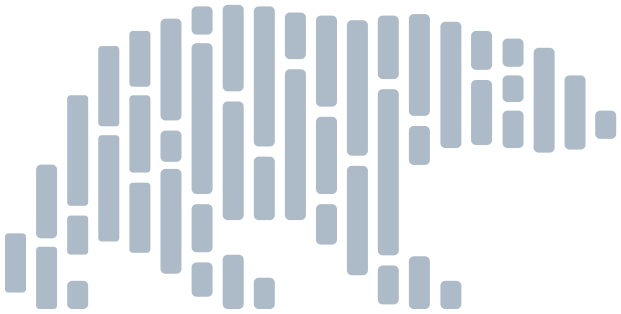polars.DataFrame.__getitem__#
- DataFrame.__getitem__(
- key: SingleIndexSelector | SingleColSelector | MultiColSelector | MultiIndexSelector | tuple[SingleIndexSelector, SingleColSelector] | tuple[SingleIndexSelector, MultiColSelector] | tuple[MultiIndexSelector, SingleColSelector] | tuple[MultiIndexSelector, MultiColSelector],
Get part of the DataFrame as a new DataFrame, Series, or scalar.
- Parameters:
- key
Rows / columns to select. This is easiest to explain via example. Suppose we have a DataFrame with columns
'a','d','c','d'. Here is what various types ofkeywould do:df[0, 'a']extracts the first element of column'a'and returns a scalar.df[0]extracts the first row and returns a Dataframe.df['a']extracts column'a'and returns a Series.df[0:2]extracts the first two rows and returns a Dataframe.df[0:2, 'a']extracts the first two rows from column'a'and returns a Series.df[0:2, 0]extracts the first two rows from the first column and returns a Series.df[[0, 1], [0, 1, 2]]extracts the first two rows and the first three columns and returns a Dataframe.df[0: 2, ['a', 'c']]extracts the first two rows from columns'a'and'c'and returns a Dataframe.df[:, 0: 2]extracts all rows from the first two columns and returns a Dataframe.df[:, 'a': 'c']extracts all rows and all columns positioned between'a'and'c'inclusive and returns a Dataframe. In our example, that would extract columns'a','d', and'c'.
- Returns:
- DataFrame, Series, or scalar, depending on
key.
- DataFrame, Series, or scalar, depending on
Examples
>>> df = pl.DataFrame( ... {"a": [1, 2, 3], "d": [4, 5, 6], "c": [1, 3, 2], "b": [7, 8, 9]} ... ) >>> df[0] shape: (1, 4) ┌─────┬─────┬─────┬─────┐ │ a ┆ d ┆ c ┆ b │ │ --- ┆ --- ┆ --- ┆ --- │ │ i64 ┆ i64 ┆ i64 ┆ i64 │ ╞═════╪═════╪═════╪═════╡ │ 1 ┆ 4 ┆ 1 ┆ 7 │ └─────┴─────┴─────┴─────┘ >>> df[0, "a"] 1 >>> df["a"] shape: (3,) Series: 'a' [i64] [ 1 2 3 ] >>> df[0:2] shape: (2, 4) ┌─────┬─────┬─────┬─────┐ │ a ┆ d ┆ c ┆ b │ │ --- ┆ --- ┆ --- ┆ --- │ │ i64 ┆ i64 ┆ i64 ┆ i64 │ ╞═════╪═════╪═════╪═════╡ │ 1 ┆ 4 ┆ 1 ┆ 7 │ │ 2 ┆ 5 ┆ 3 ┆ 8 │ └─────┴─────┴─────┴─────┘ >>> df[0:2, "a"] shape: (2,) Series: 'a' [i64] [ 1 2 ] >>> df[0:2, 0] shape: (2,) Series: 'a' [i64] [ 1 2 ] >>> df[[0, 1], [0, 1, 2]] shape: (2, 3) ┌─────┬─────┬─────┐ │ a ┆ d ┆ c │ │ --- ┆ --- ┆ --- │ │ i64 ┆ i64 ┆ i64 │ ╞═════╪═════╪═════╡ │ 1 ┆ 4 ┆ 1 │ │ 2 ┆ 5 ┆ 3 │ └─────┴─────┴─────┘ >>> df[0:2, ["a", "c"]] shape: (2, 2) ┌─────┬─────┐ │ a ┆ c │ │ --- ┆ --- │ │ i64 ┆ i64 │ ╞═════╪═════╡ │ 1 ┆ 1 │ │ 2 ┆ 3 │ └─────┴─────┘ >>> df[:, 0:2] shape: (3, 2) ┌─────┬─────┐ │ a ┆ d │ │ --- ┆ --- │ │ i64 ┆ i64 │ ╞═════╪═════╡ │ 1 ┆ 4 │ │ 2 ┆ 5 │ │ 3 ┆ 6 │ └─────┴─────┘ >>> df[:, "a":"c"] shape: (3, 3) ┌─────┬─────┬─────┐ │ a ┆ d ┆ c │ │ --- ┆ --- ┆ --- │ │ i64 ┆ i64 ┆ i64 │ ╞═════╪═════╪═════╡ │ 1 ┆ 4 ┆ 1 │ │ 2 ┆ 5 ┆ 3 │ │ 3 ┆ 6 ┆ 2 │ └─────┴─────┴─────┘

